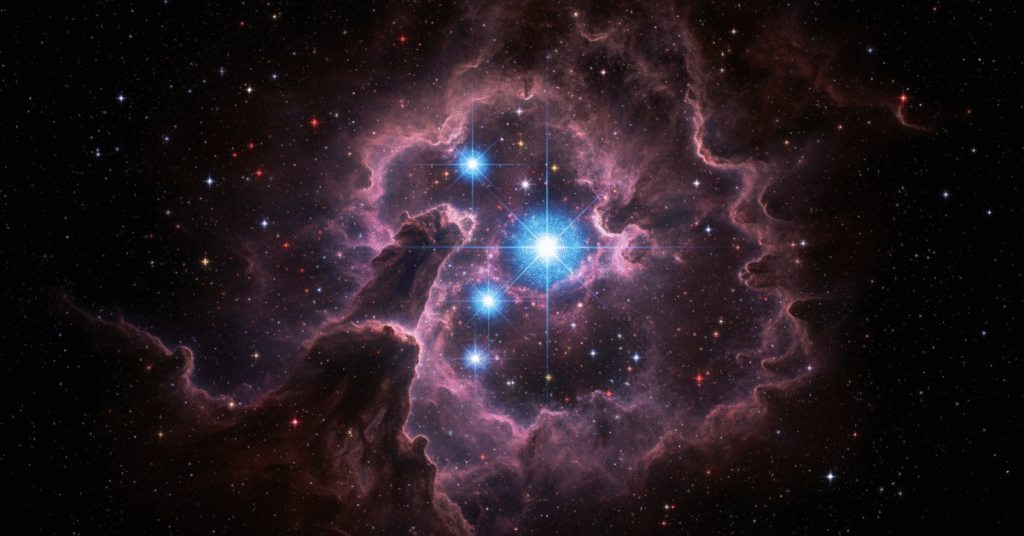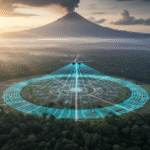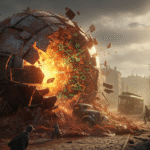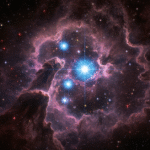The James Webb latest facts about Lobster Nebula reveal that this colossal stellar nursery, known as NGC 6357, is more spectacular and complex than anyone imagined. As someone who tracks the universe’s most incredible events, few images have ever stopped me in my tracks like the recent data from the James Webb Space Telescope (JWST) concerning the Lobster Nebula. This massive cloud of gas and dust—about 5,500 light-years away in the constellation Scorpius—has long been a mystery, but the telescope’s infrared vision has cut through the cosmic dust, giving us findings that are truly breathtaking.
Why the JWST View is a Game Changer
The Lobster Nebula is an enormous stellar nursery, a place where new, massive stars are born. Earlier images from telescopes like Hubble or VISTA often struggled to see past the thick veils of cold dust. The JWST, however, uses highly sensitive infrared instruments (like NIRCam), which can pierce these dusty layers, revealing the secrets hidden within.
The new view centres on the brilliant young star cluster, Pismis 24, located deep in the nebula’s core. What we’ve learned from this unprecedented clarity has fundamentally changed our understanding of how the biggest stars shape their environment.
The Biggest Revelation: Pismis 24-1 is a Double Star
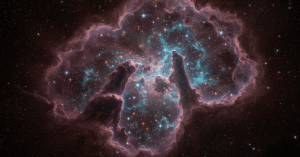
One of the most exciting James Webb latest facts about Lobster Nebula concerns its gravitational and luminous heart.
The Myth of the Monster Star
For years, the star Pismis 24-1 was thought to be a single, super-massive star—perhaps the heaviest known star in our Milky Way galaxy, estimated to be up to 300 times the mass of our own Sun. A star that big is a cosmic impossibility according to current stellar models, but that was the prevailing fact.
The 2025 Reality
The latest analysis, heavily supported by the new infrared data, confirms that Pismis 24-1 is not one, but at least two stars (possibly more). Even as a duo, they are cosmic heavyweights, weighing in at approximately 74 and 66 times the mass of the Sun. This finding confirms that while the stars are incredibly massive and luminous, they don’t break the theoretical limits of stellar physics. It also emphasizes how crucial JWST is for correcting previous astronomical assumptions obscured by dust.
Sculpted Towers and Hidden Worlds
The intense radiation and powerful stellar winds blasting out from the young, hot stars in Pismis 24 are not gentle. They act like a colossal cosmic sandblaster, eroding the gas and dust around them. This process is what creates the nebula’s dramatic structure.
The Spire That Stretches 5.4 Light-Years
The most visually stunning part of the James Webb latest facts about Lobster Nebula image is the towering, pillar-like structure that seems to defy the destruction. This single, dense spire, which resembles a giant finger pointing upwards, is estimated to span 5.4 light-years from base to tip.
- To put that in perspective: One light-year is about 9.46 trillion kilometers. The width of the tip of this spire is wide enough to fit over 200 of our entire solar systems laid end-to-end.
- Its purpose: These dense pillars are not just beautiful; they are where the pressure of the surrounding hot radiation is lower, allowing new, smaller stars to continue forming safely within their shadowed regions.
The Census of Newborn Stars
The most immediate fact revealed by the infrared filters is the sheer number of stars hidden behind the dust. JWST has successfully uncovered thousands of previously obscured newborn stars—white, yellow, and red—that are all part of the massive star-forming event taking place in this one region. This census helps scientists map out the history and mechanics of star formation in the Milky Way.
My Conclusion: The Universe’s Ultimate Nursery
When I look at this image and read the James Webb latest facts about Lobster Nebula, I don’t just see a picture; I see a history book being rewritten. It’s a humbling reminder that what we thought we knew about the universe is constantly changing. The power of a telescope that can see through thousands of light-years of dust to correct a fundamental fact about the heaviest star known is a testament to human curiosity. This nebula is not just a cosmic lobster; it is one of the most accessible and important laboratories for understanding how massive stars are born and how they shape the stellar material that ultimately forms new planets and solar systems—like our own.

